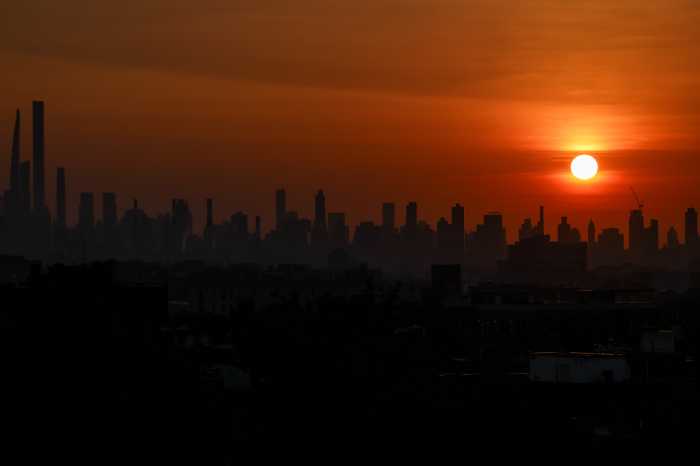
The benefits of life on the East Village and Stuyvesant Town are simple.
“You can get anywhere from here,” says Felix Garcia. “The L connects us to everything.”
It means that within minutes you can transfer to the mighty train lines running up and down Manhattan, but the neighborhood at the edge of the East River is still quiet enough to host small stores like the one where Garcia, 60, works. Its lightly stocked shelves supply neighborhood kids and families with T-shirts, socks, and shea butter.
The L at First Avenue gives residents easy access west and east, and at night the train also brings people to bars and restaurants in nearby Alphabet City. Just within Manhattan, the MTA estimates that the L serves 50,000 people a day. All that will change — and the East Village will be a little less accessible — when the L train shutdown begins in April 2019, the beginning of work to repair critical tunnel damage from Superstorm Sandy.
This week, the MTA approved contractors for the project, which is now slotted to take 15 months as opposed to 18 or 24. The contractors will be charged $410,000 per day if they miss the deadline. The hope is that’s incentive enough to minimize the repercussions of shutting down L service to and in Manhattan for more than a year.
Can 14th Street replace the L?
Transit advocates and planners are scrambling to alleviate the pain for the Williamsburg dwellers who have become used to an exceptionally quick link to Manhattan, as well as those who live farther out who will now experience a dead end after an already-long commute. (The line will still operate within Brooklyn.)
But there will be similar difficulties for Manhattan residents and businesses, particularly those who use the line to get to the center of the island and its commercial districts. To keep those people moving, advocacy group Transportation Alternatives is proposing a “PeopleWay” on 14th Street that would discourage private cars in lieu of dedicated bus and bike lanes and wider sidewalks. By their estimates, that would double the street’s carrying capacity. The group says that over 150 businesses along the route support the plan.
The MTA and the city Department of Transportation, the entities who will be responsible for coordinating alternatives on 14th Street during the L-pocalypse, promise to release draft plans for the street and any new services on it either this “spring” (according to DOT), or “late spring/summer” (according to MTA). Those plans will then go through a public review.
But the PeopleWay’s defenders are concerned that the actual plans will end up being only a “fifty-fifty” solution, says Thomas DeVito of Transportation Alternatives. “It’s always easy to fall between two stools.” The agencies could opt simply for more buses or a shared lane, for example, that wouldn’t fully make up for the disruption the L closure will cause.
To show why he believes the MTA is being overly optimistic, DeVito points to the agency’s early calculation that 80-85 percent of L train riders will move to other train lines instead of the L.
An opportunity to think big
That could be true, but where will those riders go? Jammed on the already packed J-M-Z or A lines, making those commutes even more miserable? Or will they head into Uber or Lyft’s arms?
Nick Sifuentes of the Riders Alliance, another advocacy group, cautions the MTA against meager top-side improvements. That’s a philosophy of “if you don’t build it they won’t come,” he says.
The city’s subway system has always been marred by moments of such thinking. A fully constructed Second Avenue Subway extending all the way down to the tip of Manhattan, as was planned decades ago, would have been helpful in an L-less world, for example. In the case of the L train tunnel repairs, the MTA is investing to ensure the Canarsie Tunnel under the East River is workable for the next century.
But while the agency makes those repair investments, straphangers and surface dwellers will also need their transit gaps to be filled.
At Mona’s Bar on Avenue B off 14th Street, bartender Tim Bennett, 33, tried to imagine his commute from Brooklyn by extrapolating from a recent day when the L was shut down for routine repairs. He, like many others, went over to an elevated J-M-Z connection. “People were literally down the stairs and into the street.” He said it convinced him to buy a bike.
The sole patron in the bar gave an alternative perspective: “You manage. People are gonna manage.”
He was a lifetime New Yorker who said he’d been reading too many conspiracy theories from Al Jazeera and Democracy Now to give his name. But he noted that true New Yorkers were used to coping with whatever subway service we’re given.
He mentioned a friend who treks from College Point to Inwood and back for work. That was true transit hardship. New York will survive the missing L, he surmised. “Maybe it’ll weed out the people I don’t like.”



























